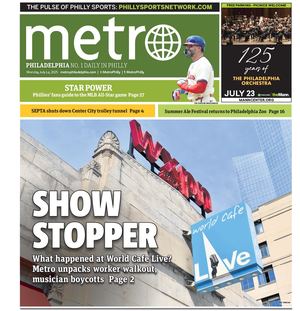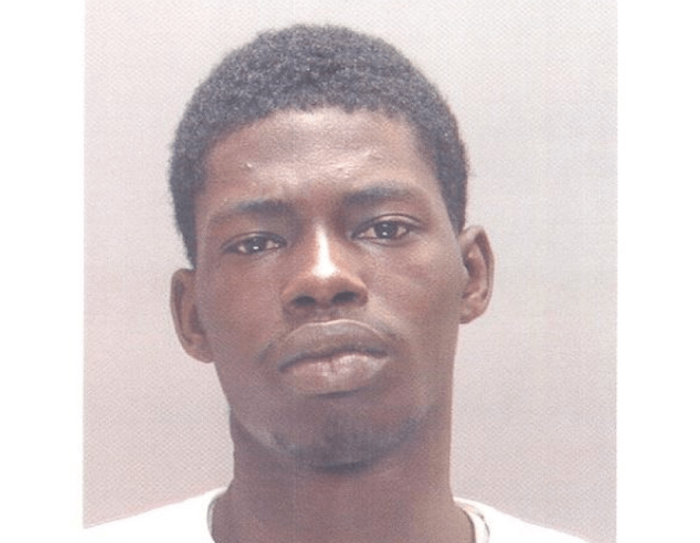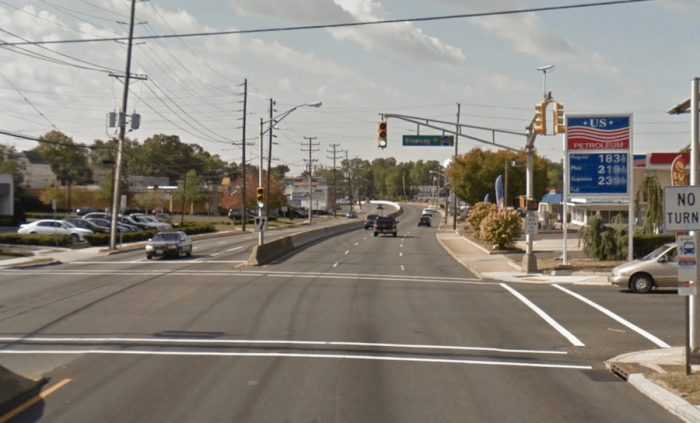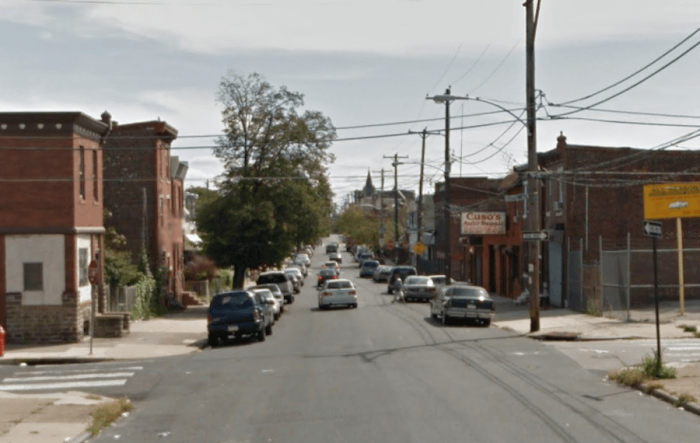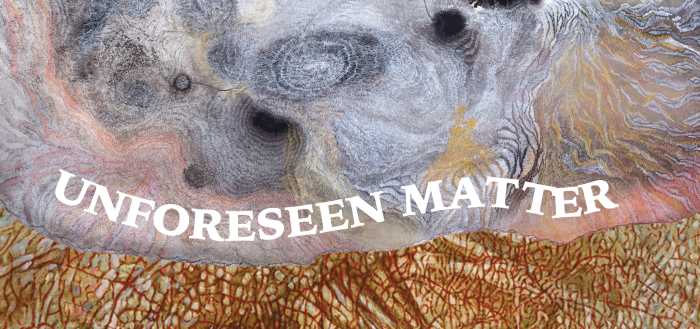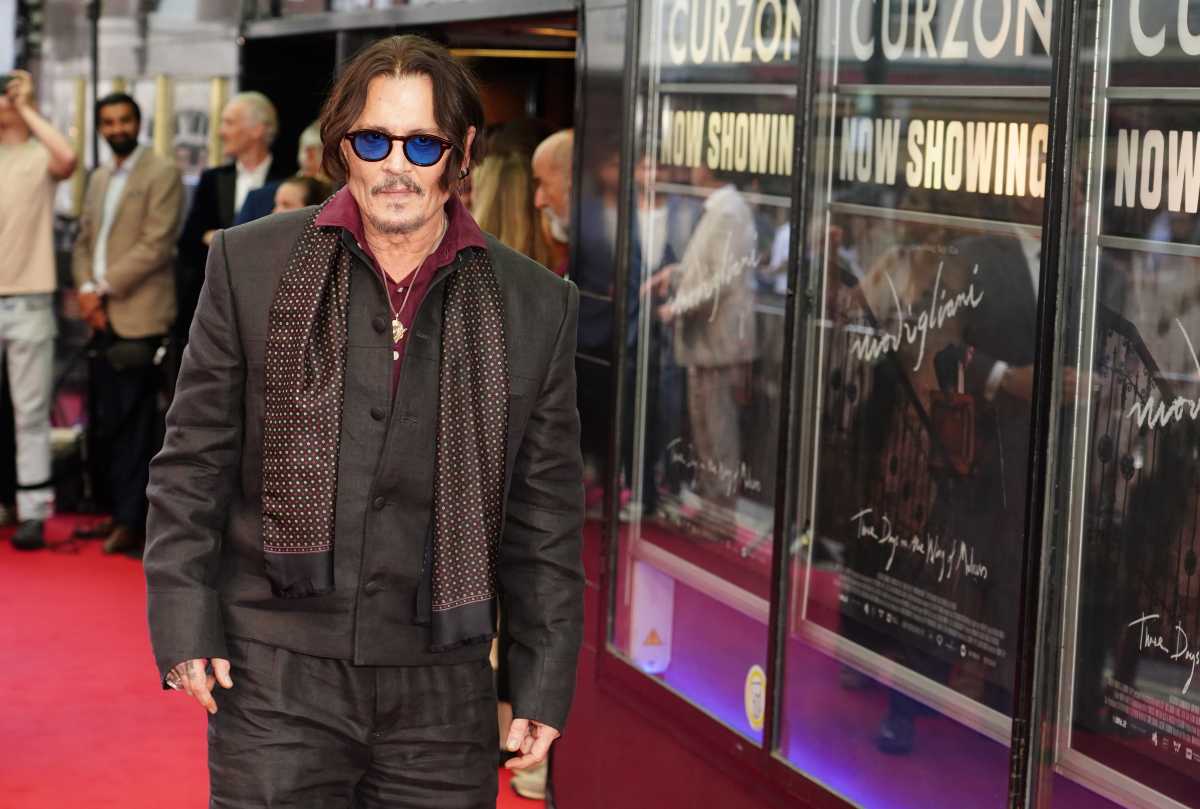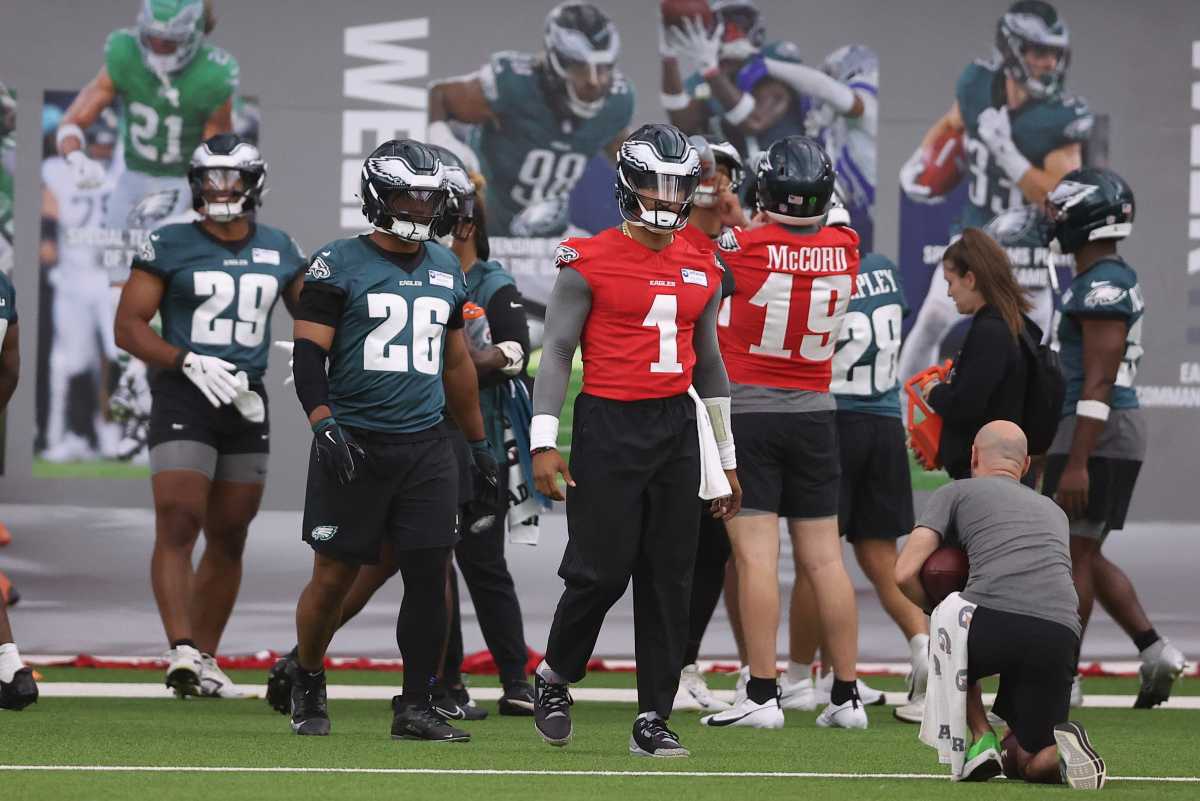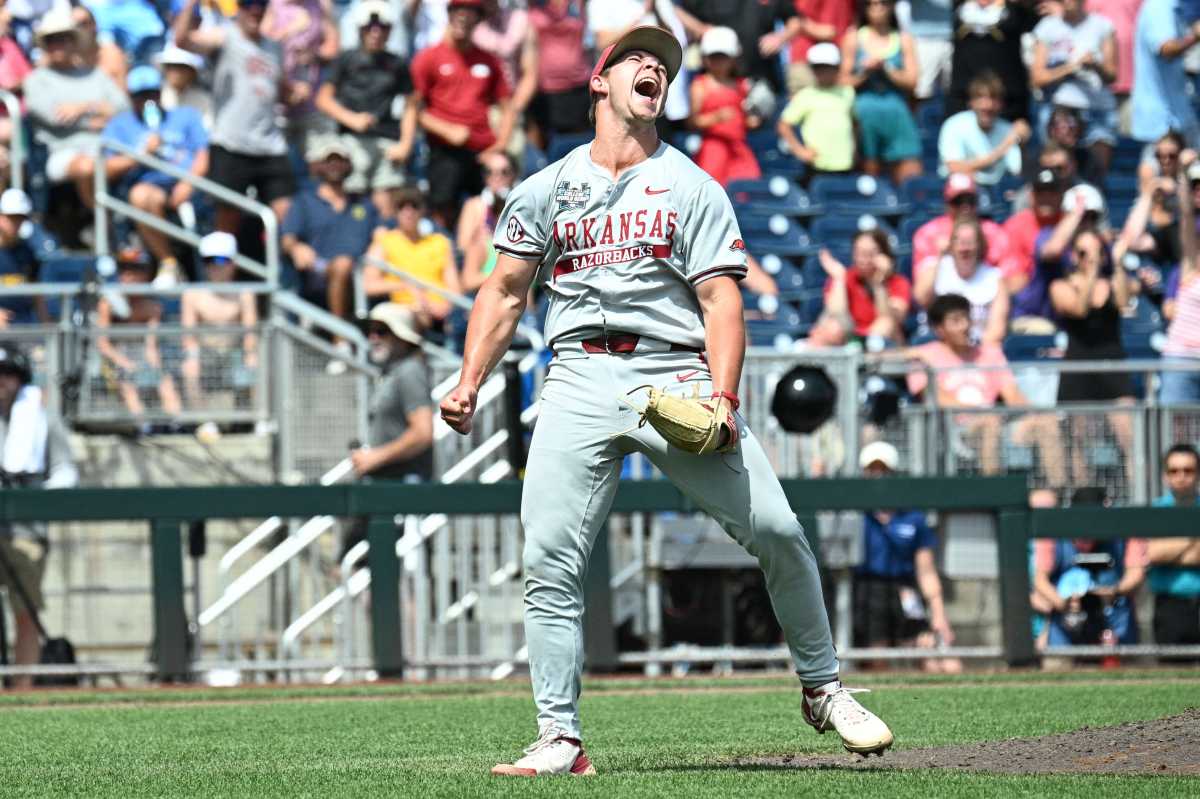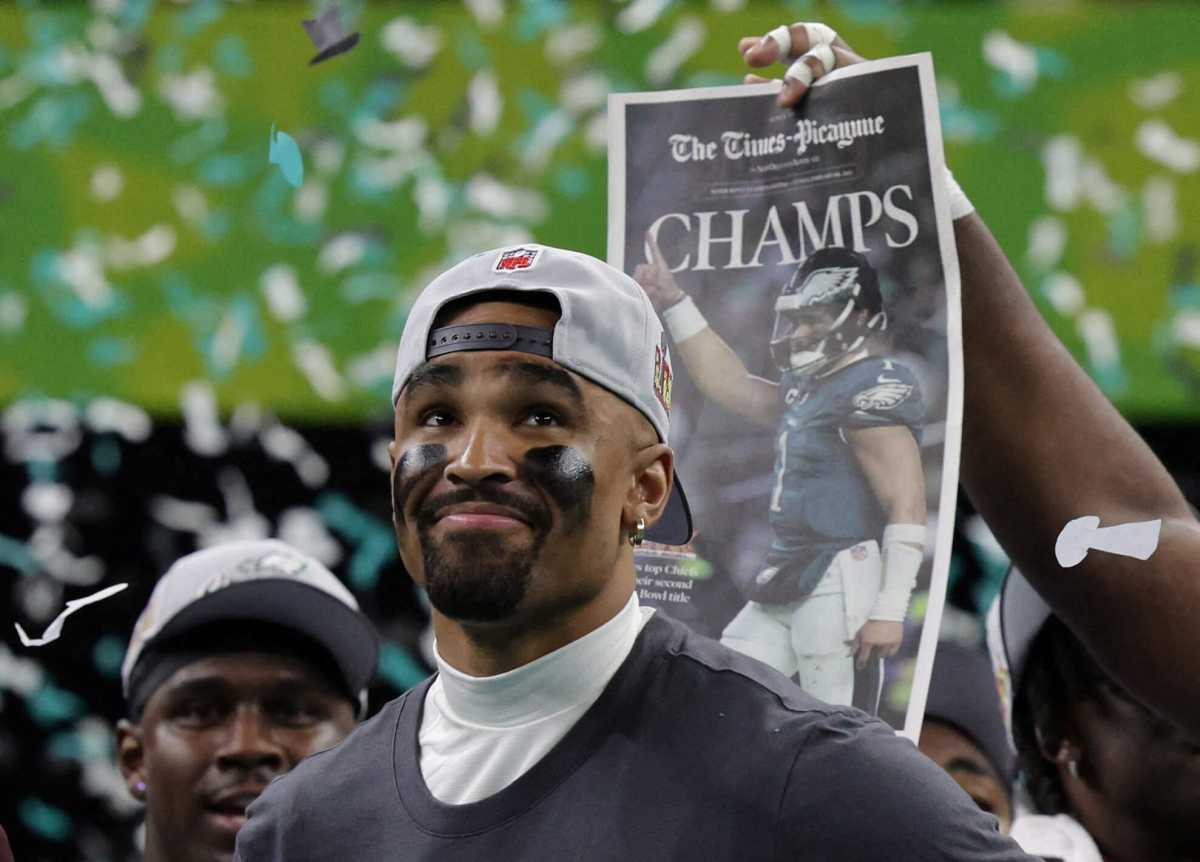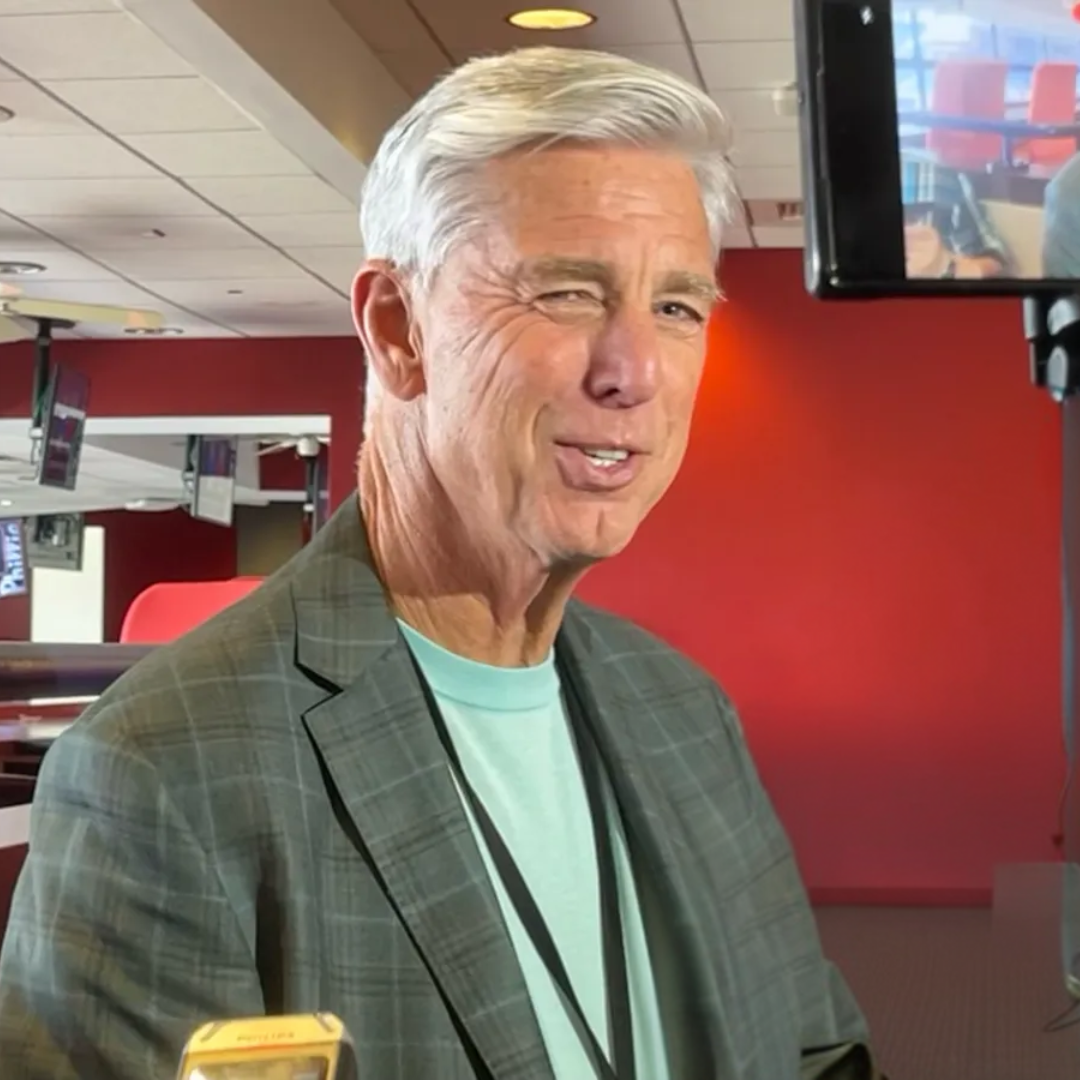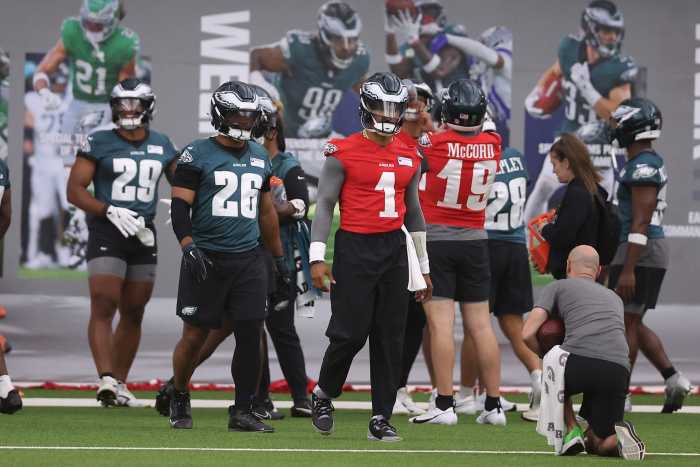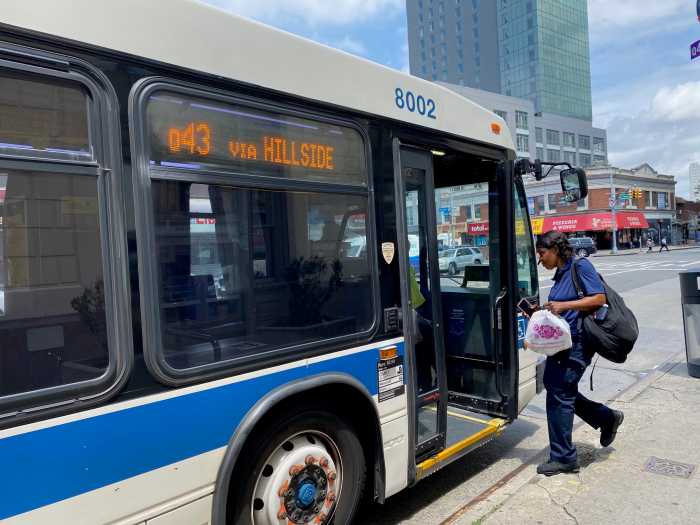The future of Philadelphia biking is here — and it’s all the way up in the Northeast.
Over the summer, several bike lane projects were quietly installed in Northeast Philadelphia, projects that indicate where Philly’s infrastructure should go if the city wants to be serious about making biking a safe way to get around. The first project is probably the most stunning, as far as Philadelphia infrastructure goes. It’s a parking-protected two-way bike lane on Ryan Avenue in Mayfair, between Rowland and Lexington avenues, which brings road users into Pennypack Park. The 50-foot-wide street originally had vehicle parking against the curb, a bike lane inside the parking lane, two lanes of motor vehicle traffic and a center median.
Now, the median is gone; parking on the north side has been moved 14 feet into the street, and a two-way bike lane has been moved to the curb, with a 4-foot buffer zone between the bike lanes and the parked cars. Bicyclists are literally separated from motor vehicle traffic by parked motor vehicles. First announced in 2015, the lane is the result of two years of talks between Councilman Bobby Henon, the Bicycle Coalition of Greater Philadelphia and the Philadelphia Streets Department.
It is the city’s first parking-protected bike lane.
The second, a buffered bike lane on Tyson Avenue, is another project endorsed by Councilman Henon for his 6th Councilmanic District.
This lane, though not revolutionary (buffered bike lanes give cyclists 10 feet of space, and similar lanes can be found on Spruce and Pine streets, and the Walnut Street Bridge in Center City), is the first piece of bicycle infrastructure to remove a lane of motor vehicle traffic since 2012, when City Council passed a cynical, dangerous law to give itself veto authority on any new bike lane. The unanimous passage of the Tyson Avenue lane was a moral victory for Philly cyclists.
The Ryan Avenue lane is a victory for proponents of safer, livable streets.
Philadelphia has long been ahead of U.S. cities as far as its bicycle infrastructure goes. We began developing bike lanes in the 1990s, and have laid down more than 435 miles of tracks for cyclists since then. Those tracks made Philadelphia the most-biked big city in the country. But times have changed. Some 2015 bike counts show that Philly’s bicycling public has leveled off at around 2 percent of commuters, which is still a healthy number of cyclists, citywide.
But many cities are gaining on us. Chicago, for instance, has vowed to only build protected bike lanes from here on out, and a recent National Association of City Transportation Officials report shows their bicycling population is growing faster than ours. While standard and buffered bike lanes are proven to make streets safer for your average cyclist, providing a physical barrier between cyclists and motor vehicle drivers has been shown to get more people on bikes, who otherwise would stick to the comfortable, yet frustrating, experience of driving a car on city streets. Whether the physical separation includes parked cars, bollards or potted plants, protected lanes should be a priority for all road users in Philadelphia. Protected lanes keep bicyclists safer in the face of the oncoming face-in-a-smartphone driver, and have actually been proven to help with motor vehicle flow — not to mention more people on bikes means fewer in cars, which is good for everyone and cleans up our city’s air. So, why haven’t more Council members gotten on board, rallying support for protected bike lanes in obvious places like JFK, Market Street, Erie Avenue, Spring Garden Street and Washington Avenue? Political will, mostly. And the unsubstantiated, irrational fear that giving bicyclists a space to ride safely will snarl motor vehicle traffic. These emotional claims have run their course — and been proven false again and again. It’s time the city make safer transportation a priority.
Randy LoBasso is the communications manager at the Bicycle Coalition of Greater Philadelphia and a columnist for Metro.
The future of biking in Philly is here
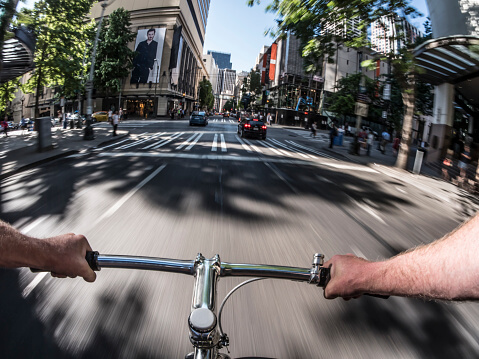
Getty Images
